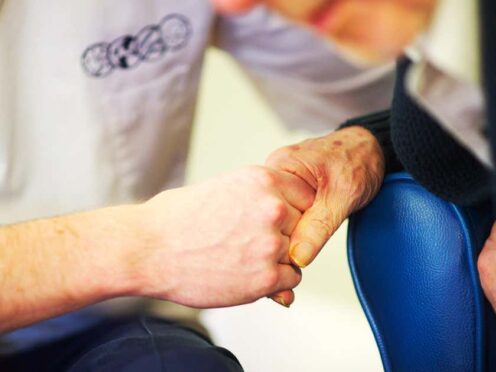
The number of people coming to the UK on a health and care visa is more than five times what it was when the route was introduced three years ago, figures show.
While 146,477 applicants were granted permission to come on this visa in 2023, when dependants were taken into account the figure rose to a total of 349,929.
This is up from 157,636 in 2022 and 63,291 in 2021.
Dependants arriving as a proportion of the overall total has grown from 31,491 dependants and 31,800 main applicants in 2021, to 80,912 dependants alongside 76,724 main applicants in 2022.
In 2023 there were 203,452 dependants and 146,477 main applicants.

Overall, a total of 1,400,351 visas were issued last year for work, study, family or resettlement – up very slightly from 1,396,836 in 2022, but below the 1,464,678 issued in the year to March 2023, which was the highest figure for any 12-month period since comparable records began in 2005.
Suella Braverman, who was home secretary until November 2023, described the visa figures as “appalling”.
Repeating her call for a cap on legal migration, she tweeted: “Work & student visa numbers, including many dependants, are appalling. This cannot go on: we don’t have enough homes, GPs or schools to support this level.”
The Home Office, which published the statistics on Thursday, said the rise in health and care visas issued has been “largely driven” by care workers and home carers.
In a breakdown of the occupations under the health and care route, care workers, home carers and senior care workers accounted for 105,881 main applications granted.
In the care workers and home carers category the number of visas issued to main applicants was more than four times higher last year than in 2022, at 89,236 up from 19,864.
New rules from March 11 will see care workers banned from bringing their loved ones to the UK under the visa, in a measure the Government hopes can tackle what it has described as “unsustainable and unfair levels of migration”.
Dr Ben Brindle, researcher at the Migration Observatory at the University of Oxford said the precise impacts of the new approach are difficult to predict.
He said: “The UK may become less attractive to care workers with family members.
“However, it’s also possible that employers will simply shift to hiring younger workers without families, or people who are willing to leave their families behind.
“In agriculture, the UK has been able to recruit tens of thousands of workers onto seasonal agricultural visas with less advantageous visa conditions.
“At the same time, care workers themselves will become more isolated if they come to the UK alone, and so may become more vulnerable to exploitation.”

Meanwhile, the Work Rights Centre warned of a “rapidly growing population of vulnerable migrant workers, in a sector which has already been identified as low-pay, low protection, and high-risk”.
Dr Dora-Olivia Vicol, chief executive of the centre, said: “While the government is unwilling to address low pay in health and care, the sector will continue to rely on overseas labour – with migrant workers, unjustly, easier to exploit.”
She said the Government must have a plan for safeguarding and supporting migrant workers.
The Home Office figures showed that Indian (18,664), Nigerian (18,143) and Zimbabwean (15,279) nationals accounted for almost six in 10 (58%) of the visas granted to care workers and home carer occupations last year.
Indian nationals accounted for more than half (51%) of visa grants for nurses (11,322 grants), and just under a third (32%) of senior care worker visas (5,301 grants), the department said.
Overall, the number of people admitted to the UK under a work visa in 2023 was 616,371, up 46% from 421,565 in 2022 and the highest number for any 12-month period since comparable records began in 2005.
Of the 616,371 people admitted via this route, just over half (337,240, or 55%) were main applicants while just under half (279,131, or 45%) were dependants.
In 2022, main applicants made up 63% of the total arriving under a work visa, while dependants made up 37%.
Of the 1,400,351 visas issued in 2023, work visas (616,371) and study visas (605,504) accounted for 44% and 43% of the total.
Some 41,767 visas were issued under the Ukraine schemes, 28,303 were granted to British National Overseas status holders from Hong Kong, 17,705 were under the EU Settlement Scheme, and 5,061 were under other settlement schemes.
In addition, 81,203 family visas were issued along with 4,437 visas for dependants joining or accompanying others.

Enjoy the convenience of having The Sunday Post delivered as a digital ePaper straight to your smartphone, tablet or computer.
Subscribe for only £5.49 a month and enjoy all the benefits of the printed paper as a digital replica.
Subscribe